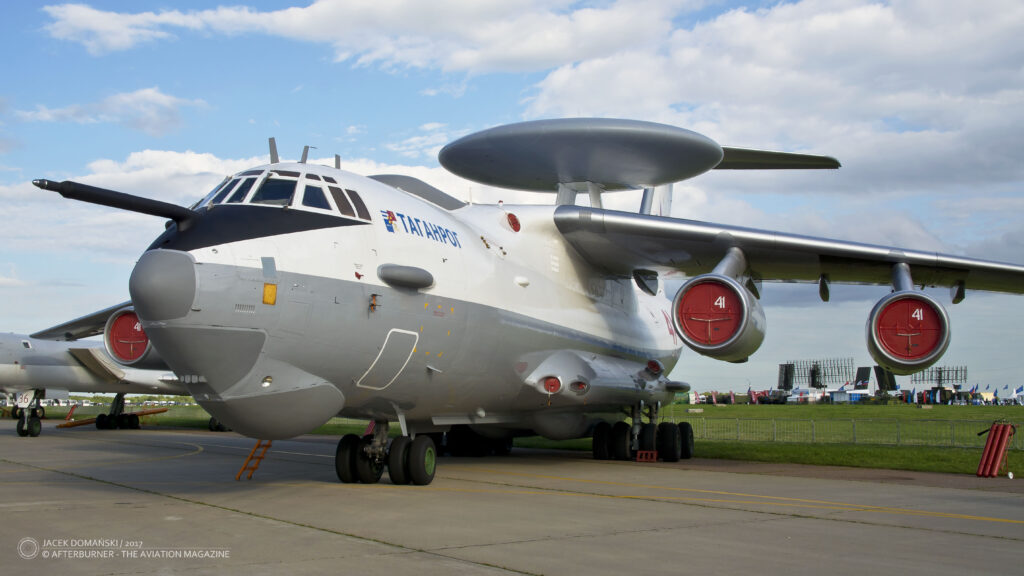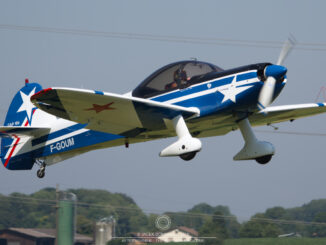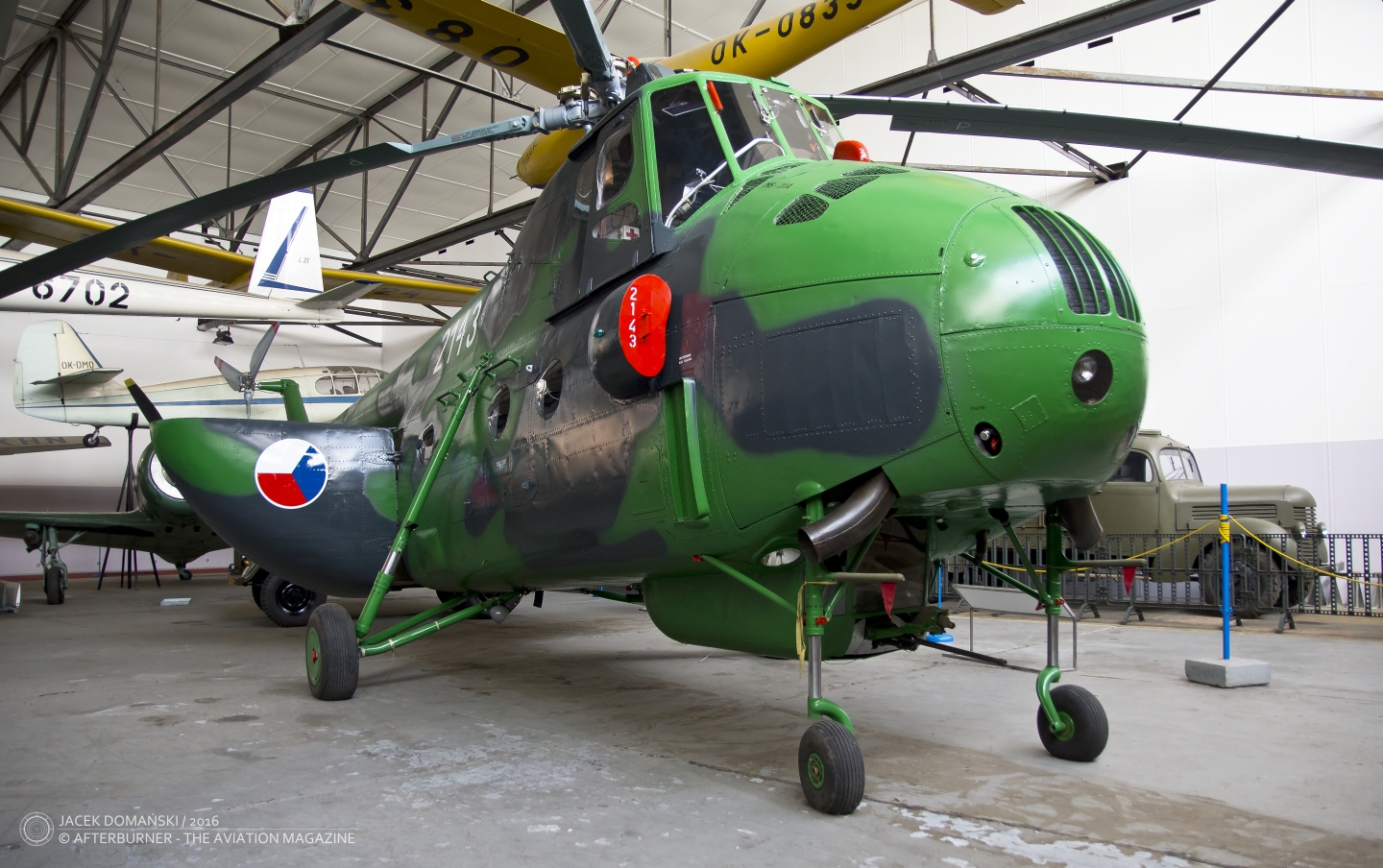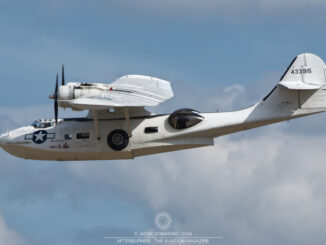 Beriev A-50 / А-50У airborne early warning and control aircraft, NATO reporting name: Mainstay (´41´ Taganrog / Таганрог), static display at International Aviation and Space Salon MAKS-2017, Zhukovsky, July 2017.
Beriev A-50 / А-50У airborne early warning and control aircraft, NATO reporting name: Mainstay (´41´ Taganrog / Таганрог), static display at International Aviation and Space Salon MAKS-2017, Zhukovsky, July 2017.
The story of Soviet airborne early warning and control (AEW&C) aircraft was opened in 1958, when Tupolev construction bureau has received an order to create such aircraft, based on one of their existing aeroplanes. There were three aircraft taken into account – Tu-95 strategic bomber, prototype of Tu-116 airliner and Tu-144 long-range passenger aeroplane. Finally, the latter became the first Soviet AEW&C, mostly because of too narrow fuselage of the other two.
On 23rd January 1962, the first prototype of Tupolev Tu-126 (NATO reporting name: Moss) – as the new aircraft was designated – took-off for its maiden flight. Three years later it entered operational service, equipped with Лиана (English: liana) radar and warning system. There were nine aircraft of this type manufactured in total, six of them were additionally carrying electronic countermeasure device, based on СПС-100 «Резеда» (SPS-100 ´Rezeda´) station.
As early as in 1969, work on a successor of Tu-126 aircraft has begun. Several existing Soviet aeroplanes were evaluated as a base for new AEW&C aircraft but regrettably none of them seemed suitable for such a specific project. Only when new cargo aircraft from Ilyushin bureau – four-engine, jet-powered Il-76 – completed its maiden flight in 1971, it soon became clear this aeroplane could be used as a base for new airborne early warning system.
The task of creation of a new AEW&C aeroplane was assigned to a team led by A.K. Konstantinov from OKB-49 in Taganrog, commonly known as Beriev construction bureau (currently ТАНТК им. Г. М. Бериева or PJSC Beriev Aircraft Company in English).
The development team started its work from evaluation of new radar equipment. In 1977, the modernized Шмель (English: Bumblebee) system was installed on Tu-126 and several test flights were performed. Yet in the same year, OKB-49 received its first two Il-76 and started with re-building them for the AEW&C purpose. In the meantime, the new aircraft received its official designation – Beriev A-50.
On 19th December 1978, the first prototype of the A-50, still without radio-electronic equipment, performed its maiden flight. It was the beginning of long and complicated development work, that lasted until 1985. Initially starting with two and then, since 1983, three prototypes of new AEW&C, the Beriev bureau construction team has evaluated different configurations of radio equipment, electronic countermeasure devices and navigation systems.
Although the A-50 was officially introduced only in 1989, the prototype aircraft were not only intensively tested between 1985 and 1988, but practically also used as operational aeroplanes. It was reported, for example, that A-50s aircraft participated in ´Zapad-84´ large-scale exercise. The new Soviet AEW&C aircraft was also seen at air bases in Poland and East Germany.
Besides the test operation of A-50 prototypes, two upgraded versions of radar equipment were evaluated until 1992, still using the abovementioned Tu-126 testbed aircraft (and later also one of the A-50 aeroplanes) – those radars were officially recognized as Шмель-2 and Шмель-M.
An interesting fact is that all the serial manufactured A-50 aircraft were built by Ташкентское авиационное производственное объединение имени В. П. Чкалова (Tashkent Aviation Production Association named after V. P. Chkalov) – an aviation plant located in now Uzbekistan, and currently known as Tashkent Mechanical Plant. There were approximately 30 aeroplanes of that type totally built until 1991 and then additional three in 2000s (of A-50EI variant for India).
In 2003, it was decided existing A-50 aeroplanes should be modernized to stay updated with latest technical innovations. The scope of upgrade included both avionics and radio-electronic systems. The first modernized AEW&C aircraft, designated A-50U, performed its maiden flight on 26th November 2009. On 31st October 2011, the first modernized A-50U entered operational service. As of 2020, aircraft inventory of the Russian Aerospace Forces includes five A-50 and four A-50U aeroplanes.
The A-50U ´41´, named after Taganrog city, is the fourth modified aircraft that entered service on 7th March 2017. It was then exhibited at static display of MAKS-2017 trade show and shortly thereafter deployed to Khmeimim, as a part of Russian aviation contingent in Syria.



